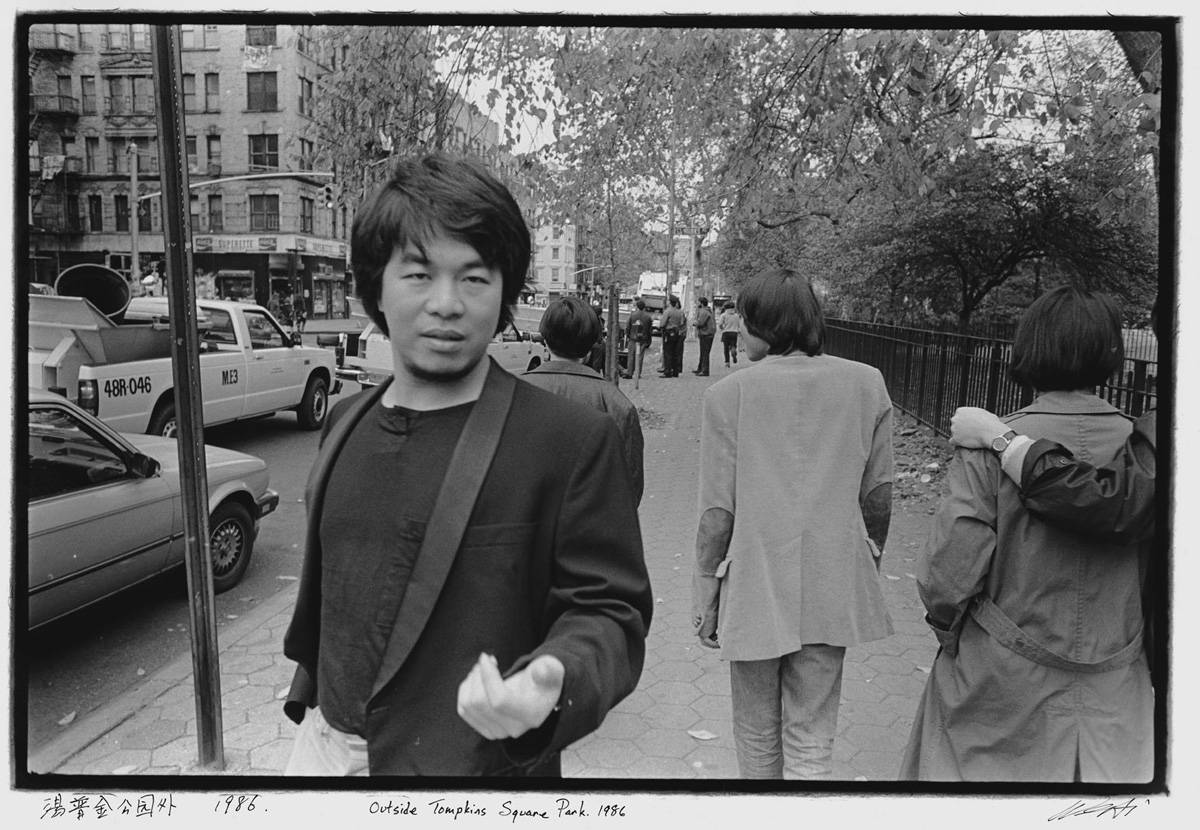
Ai Weiwei 2007, photo Wikipedia
Ai
Weiwei
艾未未
Painter,
Installations, Architect and Political Activist, Studio Beijing
*1957
BeijingBeij

Ai
Weiwei 2007, photo Wikipedia
In 1979 and 1980 in Beijing, Ai participated with paintings in the "Stars Exhibitions", which involved a group of young artists trying to exercise "their own rights to produce non-academic, non-party- line artworks, influenced by the early modern sensibility of the Impressionists and the Cubists." Because of being allowed no exhibition space, the participating artists in 1979 hung their work on a fence in front of the National Gallery in Beijing.
In 1981 Ai Weiwei went to New York City where he stayed for 12 years He left behind a political turmoil in China that led to artists organizing the "China/Avant Garde" exhibition at the National Gallery.

Ai
Weiwei in New York, 1986, photo 0tqn.com
In 1993, he returned to China, and saw that artists were mostly doing traditional easel paintings and conducted virtually no discussion about experimental types of work. To counter what he perceived as lethargy amongst his peers, he and a curator, Feng Boyi, gathered works from progressive artists and founded the "China Art and Archives Warehouse" in Beijing in 1997, the first contemporary art space in China, which he directed ever since. He is know for conceptual installations and sculptures, which incorporate objects symbolic of Chinese culture past and present. He has become one of the most influential power brokers of the Arts in China.
As a political activist, he has been highly and openly critical of the Chinese Government's stance on democracy and human rights. He has investigated government corruption and cover-ups, in particular the Sichuan schools corruption scandal following the collapse of so-called "tofu-skin schools" in the 2008 Sichuan earthquake.[4] In 2011, following his arrest at Beijing airport on 3 April, he was held for over two months without any official charges being filed; officials alluded to their allegations of "economic crimes" (tax evasion). For a lengthy discussion of Ai's activism see Wikipedia

Ai
and 'Bicycles for Ever', 2003+2011 photo Frockenberghe
Chinese
title: 草泥马挡中央,
"grass mud horse covering the middle"

'Fragments'
from a Qing Temple, 2005, photo asia.si.edu

Ai
Weiwei's 'Template' Installation, swept down by a thunderstorm.
Documenta 12, Kassel, 2007
photo 3hp.blogspot

'Soft
Ground', 2009, photo Telegraph

'Sunflower
Seeds', Tate Modern, 2011, photo utopianist
The
floor of the installation is covered with sunflower seeds
Luminous sculptures

2009,
photo art-databank

2010,
photo
2bp-blogspot
Venice Bienale 2013

'Stacked'
(760 bikes) San Gimignano, 2013, photo designyoutrust

'S.A.C.R.E.D.',
Venice Biennale 2013, photo slamxhype
Entitled S.A.C.R.E.D., Chinese independent artist Ai Weiwei has created this impressive installation at 2013 Venice Art Biennale composed of six iron light boxes depicting scenes from the his 81-day incarceration in 2011. Divided into (S)upper, (A)ccusers, (C)leansing, (R)itual, (E)ntropy, and (D oubt), this is the first time that Ai Weiwei has responded to his detainment in the form dioramas in these six steel boxes.
|
|
|
|
According to the Spiegel (see below) Ai Weiwei was representing Germany at the Venice Biennale

Meanwhile
Ai Weiwei is fighting on
protesting the smog in Beijing,
2013,
photo Ai Weiwei/Twitter/Der
Spiegel